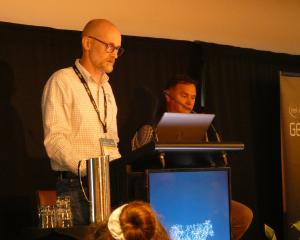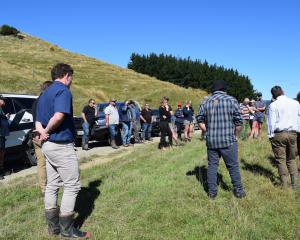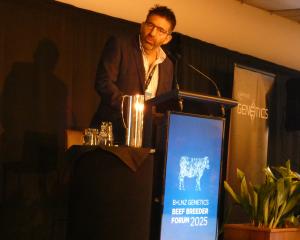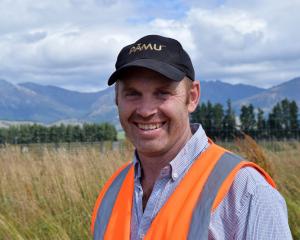
When Hamish Cottle returned to his parents’ South Canterbury farm in 2007 they wanted to find a way to generate extra income to support two families — and the solution proved to be free-range pigs.
From initially sending 12 pigs a week for processing, the Cottles now have 280 breeding sows on their 370 hectare Highgrounds farm near Timaru.
Alongside its longstanding sheep and beef operation, the farm now sends 120 pigs to market each week. The farm is also the sole pork supplier to the Harmony brand, which also provides pork for My Food Bag.
Introducing free-range pigs into their farming system has paid off in other ways. The farm has lifted productivity across the wider operation because the fertility provided by the pigs using pastures rotationally means they can grow more grass and winter crops.
"We moved here from Levin in 1989 when I was 9," said Mr Cottle, who farms with his parents John and Cheryl and his wife Angela.
"Mum and Dad were early adopters of organic farming and farmed organically through the ’90s, which served them well until we wanted to make the farm more profitable. However, some of these organic principals are still implemented today. We wanted something practical that would complement the rest of the farm while generating a regular income. Dad had previously developed an indoor piggery in the North Island and had ideas for farming them outdoors. So we put our heads together and developed a system."
Under that system the pigs are moved around the farm in a five to six-year rotation.
"The pigs go into a paddock on to pasture for four to five months and they leave their fertility, behind through their manure and urine and what they are fed, improving the fertility of the soil," he said.
"That will generally be on older pasture that needs a boost in fertility. They display their natural behaviour and root around and once they vacate it, we put in a catch crop such as green-feed oats and then rape for finishing lambs or kale for wintering stock. Then the paddock goes back to pasture, to be used for sheep and beef cattle."
He says they don’t put pigs back on to the same paddocks for five or six years.
The beauty of that is they come back to "clean ground" with no pig build-up, minimising the risk of pig diseases, he says.
"It’s a long rotation, but it is important. The pigs fit in really well with the farm system. There is a great improvement in the soil — we are finishing more lambs than we used to because we have better crops and better grass."
The Cottles enjoy working with pigs. Their sows are run in small social groups before being moved into their own smaller paddocks to farrow. Round houses are carefully designed with sow and piglet welfare in mind, so the sows are free to come and go as they please.
This is done by creating two environments within the hut. A small enclosed hot-box is for the piglets and the huts are designed so the sow can lay in a position which does not compromise the piglets’ safety.
Piglets are weaned at four weeks and split into male and female groups. They go into 1.5ha paddocks, with shelter provided, with each pig having about 100 square metres of space to ramble about.
"They stay in the paddock until it’s time for them to go to market," Mr Cottle said.
"We feed them a concentrated feed diet with the ability to graze the pasture in the paddock. The males go to market at over 80 kilograms, so from 16-20 weeks, and the females at over 100kg so a bit later, from 19 weeks."
The family initially began by supplying a few pigs a week to Freshpork. The company put them in touch with Neat Meats, which was looking to source free-range pigs for Harmony.
"The relationship grew and now we are their sole supplier, providing 120 pigs a week," Mr Cottle said.
"At any one time, we will have 1800 to 1900 pigs on the farm. Harmony does all our marketing."
The younger Cottles have brought additional experience to the farming operation alongside his parents’ long farming history.
Mr Cottle did a butchery apprenticeship before working in Australia on cattle stations, which included horseback and helicopter mustering. He spent several years in the United Kingdom, where he played for the Newton Stewart Rugby Club in southwest Scotland, and still maintains close connections there.
Mrs Cottle is a South Island soil technical specialist for PGG Wrightson.
She grew up in a farming family in New South Wales, finishing a farm management degree at the University of Sydney and has 18 years’ fertiliser industry experience in New Zealand.
"My job means I bring home skills you might not normally be exposed to while working behind the farm gate," she said.
"I also help with things like health and safety training and farm policy documents. In my PGG Wrightson role, I do a lot of facilitation so I’m exposed to a range of skills and bring that knowledge back to Highgrounds."
Despite the success of their farm model, the Cottles say they are affected by many of the challenges facing other pig farmers.
"The cost of feed has gone up a lot of the last couple of years and every farm business is feeling the squeeze," Mr Cottle said.
"Finding the right staff has also been a challenge, but we have a great team. We have two people working full time on the pigs and one who helps me with the sheep and beef. Every week, we all pitch in together to weigh the pigs and we also all work together for weaning."
NZPork has been lobbying the Government strongly for clearer labelling on imported pork products.
"I think that would be the biggest opportunity for New Zealand pork producers," Mrs Cottle said.
"New Zealand pig farmers are required to operate to much higher welfare standards than farmers in most of the countries which send their pork here. Even if it is labelled as imported, it is usually in tiny letters. We’d like to see big labels on all imported pork, to make that clear to consumers in New Zealand ."














